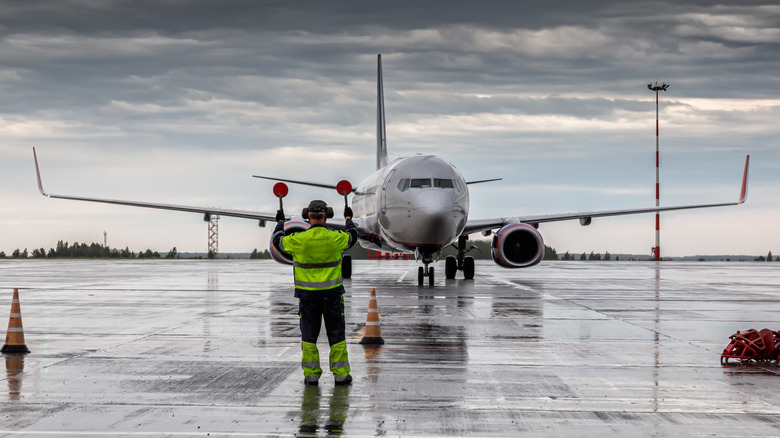It’s not uncommon for passenger planes or fighter jets to fly during inclement weather. Pilots commonly fly over or around thunderstorms if one is in their path, but engineers have designed planes to withstand many of the obstacles planes might encounter, including lightning strikes. Most planes — commercial, military, or otherwise — don’t have any issues dealing with rain, either. This is because aircraft are expected to encounter rainy weather periodically and engineers have designed jet engines to withstand certain amounts of water.
Advertisement
The most powerful jet engines you can find on commercial planes and most modern fighter jets are bypass engines, commonly referred to as turbofan engines. The “bypass” name comes from the fact that some of the air the engine sucks in bypasses the engine’s main core. The air pushed around the engine’s core is known as the cold air stream. Any water that gets through there isn’t coming into contact with anything electrical and will simply turn to water vapor when it’s expelled and mixes with the hot stream from the core.
Any water that gets into the core wouldn’t be able to withstand heat in the combustor, where air and fuel mix before an electric spark ignites it. The temperature in there can reach around 3,000 degrees, turning any water into steam. It would require a lot of rain water to put out that flame.
Advertisement
Water can still be dangerous for jet engines
Rain not having much noticeable affect on jet engines most of the time doesn’t mean water could never affect an engine. The runway can be more dangerous for jet engines than flying through rain. If there’s a buildup of water on the runway in the path of an aircraft taking off or landing, planes are known to kick that water up, putting it right in the path of the engines’ intake. If enough water gets into the core, it could extinguish the high-pressure flame being generated in the combustion chamber, causing a complete power loss.
Advertisement
But if this were to put one engine out of commission, most airliners can still fly if they lose one engine. Rain isn’t the only potential hazard for jet engines, though. Freezing temperatures can cause multiple issues. Not only can ice cause problems for commercial planes trying to land, it can significantly damage aircraft when they’re on the ground.
For starters, even a little bit of ice will prevent the fan blades from spinning. That doesn’t prevent the engine from starting — it just limits the amount of airflow that gets into the core. But when there’s not sufficient air in the combustion chamber, temperatures will skyrocket and inflict severe damage on the engine. So the biggest impact weather can have on a jet engine isn’t in the air, it’s on the ground.
Advertisement





